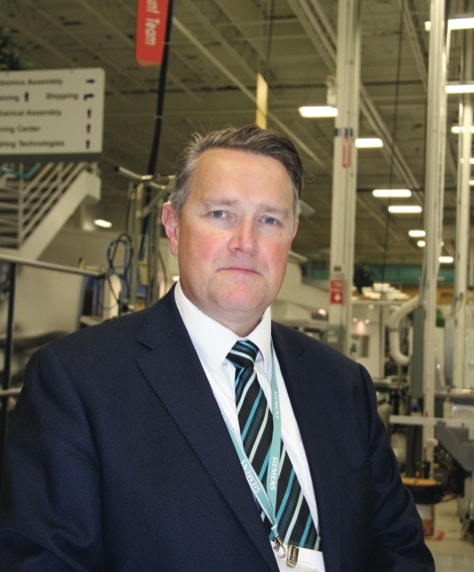
Nov. 16, 2017 – At an open house in October, Ian Almond, head of location at Siemens Canada Peterborough, discussed the company’s recent $10-million investment into the manufacturing facility.
MA: What facility upgrades did the investments go toward?
IA: Established in 1954, the Peterborough factory employs around 280 employees, and is part of the Process Instrumentation business segment of Process Automation which is a business unit in the Process Industries and Drives division. We design and manufacture measurement instruments for various process industries, such as oil and gas, chemical, food and beverage, mining, aggregates and cement. We also manage all of our own supply chain from this building.
Without investing in our own location, it [becomes] very difficult for us to stay competitive. This is why from 2014 to 2016, we invested $7 million into the physical location and an [additional] $3 million over the last year. Of the $3 million, about $1.5 million went into the building infrastructure and the other $1.5 million went toward the manufacturing environment. Part of the investment was [devoted] to the factory’s new North American distribution centre, which is three times the size of the old centre previously located on the opposite side of the building. Last year a decision was made to in-source a number of products to [Peterborough] and in order to do that, we had to make some changes so we could accommodate that volume — about 22,000 unique raw materials a month now come through these doors. We’ve had to change how we manage materials in order to [stop] our costs from increasing and impacting our customers. We’ve also hired a dedicated industrial engineer for logistics.
Another part of the project is the investment of two new air exchange systems that monitor air quality. [These] white stacks emit sensitive vapours and chemicals from our manufacturing process, changing the air four to five times an hour within the building. The emissions are well below legal limits and are monitored and certified through the Ministry of Environment and Climate Change.
Meanwhile the electronics assembly area, which takes the designs of printed circuit board assemblies and turns them into physical components, received new laser markers which create barcodes directly on the circuit boards. As well, new pick-and-place machines enable the production line to place 10 parts per second. These investments have made for smarter ways of working, allowing the department to move from a three-shift operation down to a more efficient one-shift operation. At the controller flow line, the investment [secured] a soldering machine, a board stack functional tester, a hipot tester and ergonomic workstations that can be customized for worker height and arm reach.
These are very, very significant investments and that means this location is here to stay. We are like any other manufacturer, we need to make adjustments in order to get the best out of [our] opportunities.
MA: What are your thoughts on today’s manufacturing industry?
IA: One of the [most] exciting parts of business at the moment is the move toward affordable technology. [Behind me] is an image of a robotic arm shaking hands with a human hand. Embracing technology in manufacturing is not a way of eliminating jobs — it’s a way of changing the way we work. We’d like to say we have achieved a real harmonization in our manufacturing environment and we have done that hand-in-hand with our employees. We’re moving toward a more optimal way of working and we [want to help] our employees understand that technology [can actually] support them by helping them do what they do. We spend a lot of time with our workers so we can learn about their pain points and look for ways to take those away — whether it’s by introducing new technology or by changing a process. Because they are [involved] right from the very beginning, they really embrace these [changes].
The employees of the future who are now in school are looking at ways to make use of the technology that we haven’t even begun to introduce into the facility yet, but as we do and as we continue to embrace sensible automation…we get to do that journey together. We’re doing things here that are going to excite them and attract them to the organization.
MA: What’s next for Siemens Peterborough?
IA: We don’t want to stand still. We will take the investment and will look for how we can [develop] that — not just in the building, the infrastructure or the manufacturing — but in our people. We have more ideas than money to spend on them; we have more ideas than we have people. To embrace some of those, we look to leverage [those possibilities] with government funding. Opening our doors today [provides some] insight into what we do, and as we go forward, we will look for ways to do even more.
This profile was originally published in the November/December 2017 issue of Manufacturing AUTOMATION.
Advertisement
- Manufacturing sales up 0.5% at $53.7B in September
- Olymel invests $30M in two Ontario plant expansions
